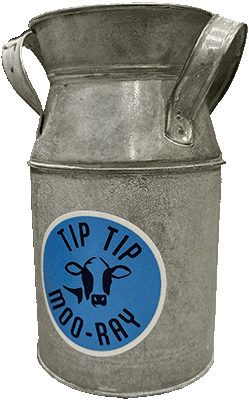Vat-pasteurized milk is not raw milk, it’s vat-pasteurized and must qualify as sufficiently pasteurized by ensuring the alkaline-phosphatase enzyme has been destroyed. Let’s take a look at some processing methods that are found on the milk market.
- Raw milk
- Vat-pasteurized milk
- Ultra-pasteurized milk
- High-temperature short-time
Vat-pasteurized processing is gentler than ultra-pasteurized milk, and it’s easier to conduct on the farm. If your body tolerates pasteurized milk, and you cannot access raw milk, vat-pasteurized is often your best locally available option. Vat-pasteurized milk is priced independently, typically priced above conventionally processed milk, similar to raw milk.
I’ve never experienced bodily intolerance to milk, pasteurized or not, so I find that vat-pasteurized is a good option in places where raw milk is not available. Raw milk sells out quickly in many markets across the United States, including Seattle, so I’m usually consuming 50% raw milk and 50% vat-pasteurized milk through any given month due to availability and my ability to visit the grocery store within 24 hours of delivery.
Different types of pasteurization
Pasteurization can be accomplished by using different temperatures and durations of heating. This process is considered complete when the alkaline-phosphatase test has confirmed no enzymatic activity remains in the milk.
What is vat-pasteurized milk?
Vat-pasteurized milk is pasteurized slower than ultra-pasteurized milk. Raw milk is heated in a vat to 145°F (63°C) and held for 30 minutes to ensure complete pasteurization. When vat-pasteurization is complete the milk is cooled to 40ºF, then bottled and refrigerated.
On-farm vat-pasteurization is more accessible to farmers than other processes which require expensive tooling, so it’s a common option to sell milk on the pasteurized market direct-to-consumer instead of selling the milk to processing companies.
What is high-temperature short-time processing?
High-temperature short-time (HTST) processing is less common. In this process, raw milk is heated to 161°F (72°C) for 15 seconds. HTST milk is not as shelf-stable as UHT milk, and has a greater effect compared to vat-pasteurized milk, so it falls into a less-preferred middle ground.
What is ultra-pasteurized milk?
Ultra-pasteurized milk, or Ultra-high-temperature processed milk, is heated to high temperature very quickly for a just a few seconds, while continuously flowing through small tubes to increase surface area exposure to the heat, before cooling and bottling. The standard ultra-pasteurization process is 280°F (138°C) for 2-5 seconds.
The primary advantage of ultra-pasteurized milk is that it often does not need to be refrigerated before opening, though it might be sold that way. This is ideal for reducing food spoilage when the milk is distributed to consumers in far away markets.
Ultra-pasteurized milk often hinges on aseptic packaging and hermetic sealing, ie milk is packaged in sterile containers and environmental air is mechanically displaced during the bottling process.
Vat-pasteurized milk vs ultra-pasteurized milk
Both vat-pasteurized and ultra-pasteurized milk must pass the alkaline-phosphatase test, which checks if the enzyme alkaline-phosphatase has been destroyed, to be considered sufficiently pasteurized. Vat-pasteurized milk never experiences the extreme heat of 280ºF, so the milk is closer to its raw form, but it’s still pasteurized.
What is raw milk?
Raw milk is unpasteurized, non-homogenized, and otherwise untreated fluid raw milk. In the United States, state-level regulatory agencies set how and where raw milk can be sold. You can use this website to find raw milk worldwide.




